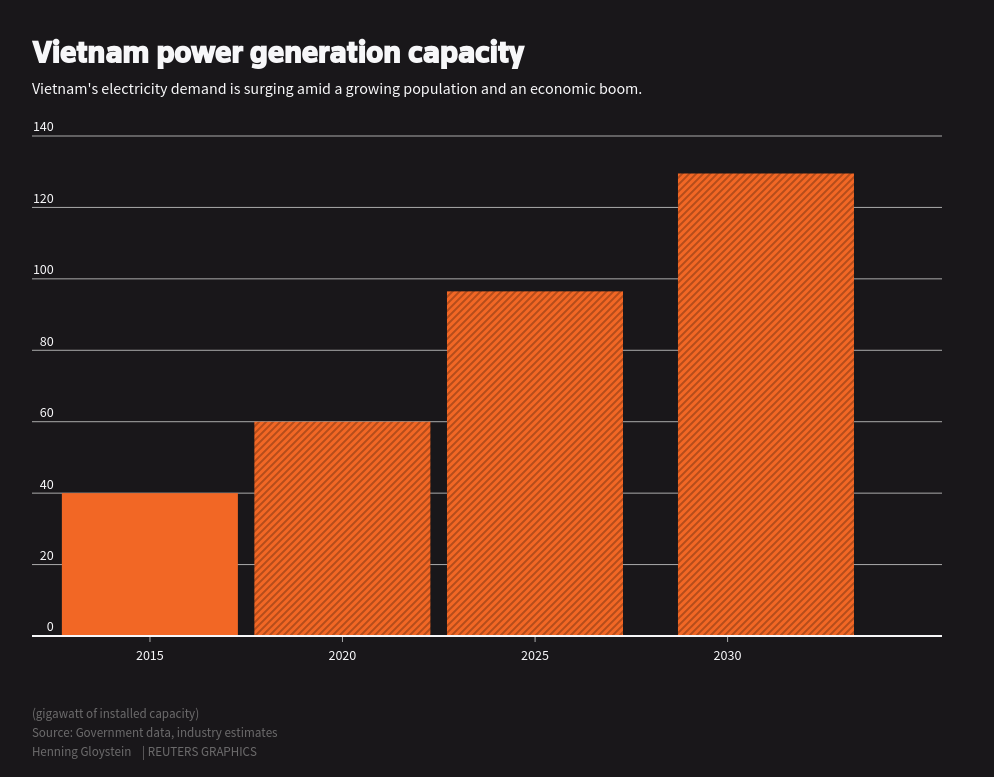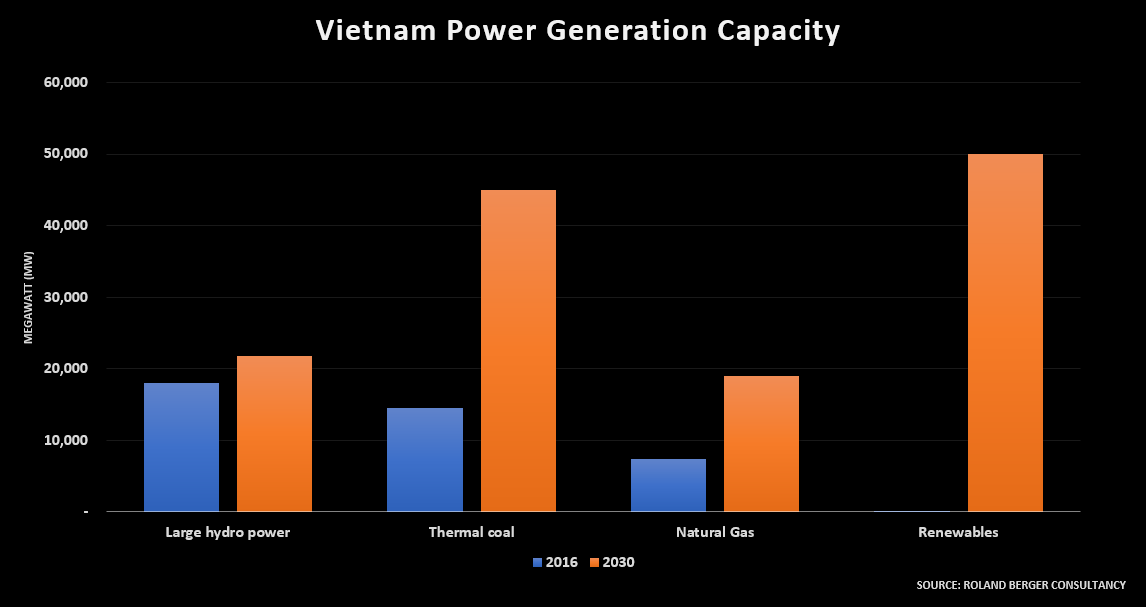 |
To meet surging power demand, Vietnam is expected to increase its power generation capacity to more than Thailand’s total installed capacity by 2025 and its electricity sector will likely be bigger than Britain’s by the mid-2020s, Reuters reported.
Vietnam has become a hot spot for energy investors eyeing a spending of up to US$150 billion over the coming decade, according to Reuters.
With a population nudging 100 million and annual GDP growth around 7%, Vietnam has forecast power generation will need to rise from about 47,000 megawatts (MW) currently to 60,000 MW by 2020 and 129,500 MW by 2030.
Pat Markey, managing director of Sierra Vista Resources, a Singapore-based commodity advisory, told Reuters coal demand will be extremely strong in Vietnam.
Once largely reliant on hydropower, the production hub for global companies such as Samsung Electronics has turned to cheap but polluting coal to boost electricity generation.
Vietnam’s coal use in the five years to 2017 grew 75%, faster than any other country in the world, according to a research paper by the Harvard Kennedy School’s Ash Center on Vietnam.
The country’s current Power Development Plan (PDP 7) puts coal front and center to meet new demand.
While generation is set to double, PDP 7 forecast coal-fired generation would grow rapidly to 2030, with its share of the energy market rising from 33% to 56%.
But a change of emphasis that began in 2016 with a revised version of PDP 7 has started to embrace cheaper renewable energy, and analysts expect PDP 8, due later this year, to further adjust policy.
“One of Vietnam’s priorities is to develop renewable energy sources to gradually reduce its reliance on traditional sources of electricity to protect the environment,” Vice Minister of Industry and Trade Cao Quoc Hung said in a statement posted on the ministry’s website earlier this month.
Facing a rapid rise in pollution, the Ministry of Industry and Trade (MoIT) has started to offer incentives for renewables, which so far only play a marginal role in Vietnam’s energy sector.
According to a draft law planned for June, state-owned utility Vietnam Electricity (EVN), which distributes all of the country’s power, will pay solar projects between 6.67 and 10.87 cents per kilowatt-hour (kWh).
Dieter Billen of consultancy Roland Berger said there is very strong interest in solar due to the high level of feed-in-tariffs.
 |
One of the first developers into Vietnam’s solar sector has been Gulf Energy from neighboring Thailand, which this year has entered several long-term projects that will benefit from feed-in-tariffs.
Billen said there was also “growing interest in wind power thanks to attractive feed-in tariffs” of 8.5 cents per kWh for onshore and 9.8 cents per kWh for offshore facilities.
The Global Wind Energy Council (GWEC) in June will hold meetings in Vietnam’s capital Hanoi, as it looks to drive growth in a new market.
Should government policy continue to support renewables and wind and solar become cheaper and better, Roland Berger’s Billen said renewables could even challenge coal as Vietnam’s biggest electricity source by 2030. Hanoitimes
Ngoc Mai
 With a population nudging 100 million and annual GDP growth around 7%, Vietnam has forecast power generation will need to rise from about 47,000 MW currently to 60,000 MW by 2020 and 129,500 MW by 2030.
With a population nudging 100 million and annual GDP growth around 7%, Vietnam has forecast power generation will need to rise from about 47,000 MW currently to 60,000 MW by 2020 and 129,500 MW by 2030.